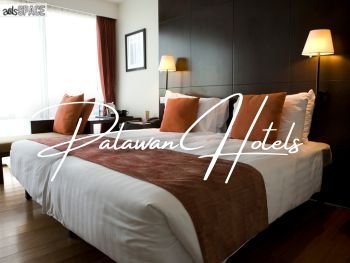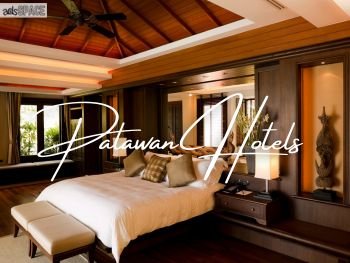Introduction
Puerto Princesa, the capital of Palawan, is more than just a gateway to natural wonders like the Underground River and Honda Bay. It is also a melting pot of cultures, traditions, and beliefs that reflect centuries of migration, trade, and adaptation. Home to Indigenous groups, early Cuyunon settlers, and later waves of migrants from Luzon, the Visayas, and Mindanao, Puerto Princesa’s cultural identity is layered and dynamic. Today, the city continues to balance its deep-rooted traditions with modern urban life, making it one of the most diverse cultural centers in the Philippines.
Cuyunons: The Early Settlers
Among the earliest groups recognized in Puerto Princesa are the Cuyunons, who originally came from the Cuyo Islands northeast of Palawan. Known for their industriousness and refined traditions, the Cuyunons were instrumental in shaping the city’s early cultural landscape. Their folklore, music, and agricultural practices left a legacy that still influences Puerto Princesa’s way of life.
The Cuyunon language was historically the lingua franca of Palawan, and many folk songs, proverbs, and oral traditions continue to be passed down in Cuyunon. Their community values, rooted in respect for family and hospitality, remain visible in the social fabric of the city today.
The Tagbanua People
The Tagbanua are one of the most prominent Indigenous groups in Palawan, including Puerto Princesa. Known for their deep spiritual connection to the land and sea, they are among the oldest ethnic groups in the Philippines. The Tagbanua practice traditional forms of resource management, such as sustainable fishing and swidden agriculture, ensuring the balance of nature is preserved for future generations.
The Tagbanua are also renowned for their surat Tagbanua, one of the Philippines’ few surviving ancient scripts, and their rich oral literature. Their rituals often center around nature spirits, ancestors, and deities associated with agriculture and the sea. Some Tagbanua communities have retained ancestral domain rights over parts of central Palawan, ensuring the continuation of their traditions.
The Batak Community
Another Indigenous group in Puerto Princesa is the Batak, a small and endangered ethnolinguistic community primarily residing in the northern hinterlands of the city. Traditionally, the Batak were nomadic hunter-gatherers, relying on the forest for food, medicine, and shelter. Today, many Batak communities engage in small-scale farming, forest foraging, and handicraft-making.
Despite their small population, the Batak maintain unique cultural practices, including animist beliefs, healing rituals, and traditional music using bamboo instruments. However, modernization and economic pressures have threatened their way of life, making cultural preservation a pressing issue for this community.
Languages Spoken
Puerto Princesa is linguistically diverse. While Cuyunon remains an important cultural language, Tagalog is now the dominant tongue due to national influence and migration. Visayan languages, particularly Cebuano, are also widely spoken because of migrants from the Visayas region.
English is commonly used in education, government, and tourism, reflecting the city’s role as an international destination. This multilingual environment fosters cultural exchange but also poses challenges for language preservation, especially for Indigenous tongues like Tagbanua and Batak.
Religion and Spiritual Practices
The majority of Puerto Princesa’s residents are Roman Catholic, a legacy of Spanish colonization. Catholicism plays a central role in community life, with churches such as the Immaculate Conception Cathedral serving as cultural and spiritual landmarks.
Alongside Catholicism, Protestant and Islamic communities also thrive, reflecting the city’s pluralism. Indigenous groups like the Tagbanua and Batak continue to practice animist traditions, often blending them with Christian influences. This coexistence of belief systems underscores Puerto Princesa’s cultural diversity.
Festivals and Celebrations
Puerto Princesa is known for its vibrant festivals that celebrate culture, history, and the environment. The most notable is the Baragatan Festival, held annually in June to commemorate the founding of the Province of Palawan. The festival features street dancing, cultural exhibitions, trade fairs, and showcases of Indigenous traditions.
Other celebrations include Pangalipay sa Baybay, a coastal festivity filled with music and dance, and the Balayong Festival, which celebrates the blooming of Palawan cherry blossoms, symbolizing renewal and hope. These festivals highlight both the natural and cultural wealth of Puerto Princesa.
Arts, Crafts, and Performing Traditions
Puerto Princesa’s cultural identity is also expressed through its arts and crafts. Indigenous communities produce baskets, mats, and handicrafts made from rattan, bamboo, and pandan leaves. These products not only sustain livelihoods but also preserve traditional weaving techniques.
Performing arts also play a role in the city’s culture. Traditional dances, such as those performed during Cuyunon and Tagbanua rituals, coexist with modern cultural performances that blend Filipino and global influences. The city also supports local artists through exhibitions and cultural programs.
Culinary Culture
Food is an integral part of Puerto Princesa’s cultural expression. Cuyunon cuisine includes dishes such as tamilok (woodworm delicacy), lato (sea grapes), and kinilaw (raw fish marinated in vinegar). Fresh seafood, coconut-based dishes, and tropical fruits also dominate the city’s culinary landscape.
Street food culture is vibrant, particularly along the baywalk area where locals and tourists enjoy grilled seafood, barbecue, and local snacks. Cuisine reflects both tradition and innovation, blending Indigenous knowledge with modern Filipino cooking styles.
Modern Influences and Cultural Exchange
As a growing urban center and tourist destination, Puerto Princesa has been shaped by modern influences from Manila, Cebu, and international visitors. Migration has brought new cultural practices, while tourism has promoted cultural exchange. Educational institutions, media, and technology also play a role in shaping contemporary culture.
Despite modernization, there is a conscious effort to preserve and promote local heritage. Cultural villages, museums, and festivals ensure that traditions are passed down, while inclusive policies protect Indigenous communities from marginalization.
Conclusion
Puerto Princesa’s culture is a tapestry woven from Indigenous traditions, migrant influences, and modern innovations. From the Cuyunons’ folk heritage to the spiritual practices of the Tagbanua and Batak, and from vibrant festivals to diverse cuisines, the city embodies cultural richness that is both rooted in history and open to change.
Today, Puerto Princesa stands as a model of cultural diversity and resilience. By preserving traditions while embracing modernity, it continues to thrive as a city where heritage and progress coexist, offering both locals and visitors a deeper appreciation of what it means to be part of Palawan’s capital.




